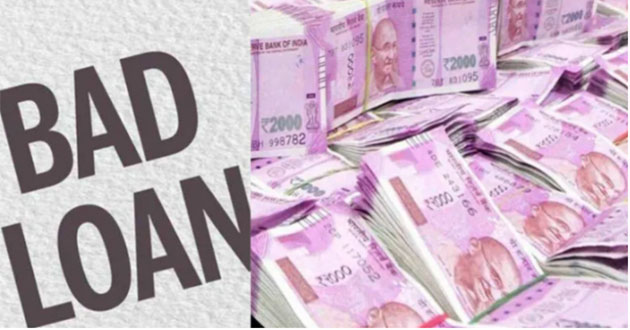
Banks in India wrote off bad loans totaling more than ₹2.09 lakh crore during the FY23, according to information obtained through Right to Information (RTI) queries.
This brings the total loan write-offs by the banking sector to a significant ₹10.57 lakh crore in the past five years, as per data provided by the Reserve Bank of India (RBI).
Loan write-offs by banks increased to ₹209,144 crore during FY23, compared to ₹174,966 crore in FY22 and ₹202,781 crore in FY21, as per the RTI data. Banks have been utilising loan write-offs as a strategy to reduce the burden of non-performing assets on their books.
However, the recoveries from these written-off loans have been quite dismal, with only ₹30,104 crore recovered in FY21, ₹33,534 crore in FY22 and ₹45,548 crore in FY23.
The RBI's RTI response reveals that out of the ₹586,891 crore loans written off in the last three years, banks were able to recover only ₹109,186 crore, indicating a meagre recovery rate of 18.60% during this period.
The loan write-offs have helped banks in reducing their Gross Non-Performing Assets (GNPA) to a 10-year low of 3.9% of advances by March 2023. Over the years, gross NPAs of banks have decreased from ₹10.21 lakh crore in FY18 to ₹5.55 lakh crore by March 2023, mainly due to the impact of loan write-offs.
Taking this into account, the total defaulted loans (including write-offs but excluding recovered loans) amount to approximately ₹10.32 lakh crore. If the write-offs are included, the total Non-Performing Asset (NPA) ratio would have been 7.47% of advances, higher than the 3.9 percent reported by the banks.
What happens when a loan is written off?
When a bank writes off a loan, it removes it from the bank's asset book. This action is taken when the borrower has failed to repay the loan, and the chances of recovering the outstanding amount are very low.
The defaulted loan, also known as NPA, is then transferred from the assets side and recorded as a loss. A loan is classified as an NPA when the borrower fails to make the principal or interest payment for a period of 90 days or more.
Even after the write-off, the bank is required to continue its efforts to recover the loan using various options. Provisioning must also be made for the written-off amount. As a result of the write-off, the bank's tax liability is reduced as the written-off amount is deducted from the profit.






Comments
Add new comment